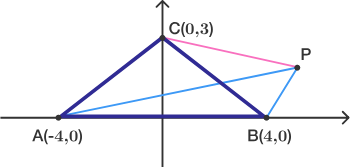Events & Promotions
|
|

GMAT Club Daily Prep
Thank you for using the timer - this advanced tool can estimate your performance and suggest more practice questions. We have subscribed you to Daily Prep Questions via email.
Customized
for You
Track
Your Progress
Practice
Pays
Not interested in getting valuable practice questions and articles delivered to your email? No problem, unsubscribe here.
- Nov 19
12:30 PM EST
-01:30 PM EST
Learn how Keshav, a Chartered Accountant, scored an impressive 705 on GMAT in just 30 days with GMATWhiz's expert guidance. In this video, he shares preparation tips and strategies that worked for him, including the mock, time management, and more - Nov 20
01:30 PM EST
-02:30 PM IST
Learn how Kamakshi achieved a GMAT 675 with an impressive 96th %ile in Data Insights. Discover the unique methods and exam strategies that helped her excel in DI along with other sections for a balanced and high score. - Nov 22
11:00 AM IST
-01:00 PM IST
Do RC/MSR passages scare you? e-GMAT is conducting a masterclass to help you learn – Learn effective reading strategies Tackle difficult RC & MSR with confidence Excel in timed test environment - Nov 23
11:00 AM IST
-01:00 PM IST
Attend this free GMAT Algebra Webinar and learn how to master the most challenging Inequalities and Absolute Value problems with ease. - Nov 24
07:00 PM PST
-08:00 PM PST
Full-length FE mock with insightful analytics, weakness diagnosis, and video explanations! - Nov 25
10:00 AM EST
-11:00 AM EST
Prefer video-based learning? The Target Test Prep OnDemand course is a one-of-a-kind video masterclass featuring 400 hours of lecture-style teaching by Scott Woodbury-Stewart, founder of Target Test Prep and one of the most accomplished GMAT instructors.
Kudos
Bookmarks
D
Be sure to select an answer first to save it in the Error Log before revealing the correct answer (OA)!
Difficulty:
 95%
(hard)
95%
(hard)
Question Stats:
44% (02:55) correct 56%
(03:39)
wrong
56%
(03:39)
wrong  based on 63
sessions
based on 63
sessions
History
Date
Time
Result
Not Attempted Yet
\(\triangle ABC\) has coordinates A= (-4, 0), B= (4 , 0), and C= (0 , 3). Let P be the point in the first quadrant such that \(\triangle ABP\) has half the area of \(\triangle ABC\) but both triangles have the same perimeter. What is the length of CP? 
hyrCFIlaO6-92280.png [ 8.29 KiB | Viewed 7747 times ]
A. \(\sqrt{15}\)
B. 4
C. \(\sqrt{17}\)
D. \(\sqrt{21}\)
E. 5
Attachment:
hyrCFIlaO6-92280.png [ 8.29 KiB | Viewed 7747 times ]
A. \(\sqrt{15}\)
B. 4
C. \(\sqrt{17}\)
D. \(\sqrt{21}\)
E. 5
Kudos
Bookmarks
Lipun
1 number bhai! But we don't need to know ellipse to answer this question.
Suppose coordinates of P =(x,y)
Since the △ABP has half the area of △ABC and both triangle have common base, y must be equal to 3/2.
Also, AC=BC=5, hence AP+PB = 5+5=10........(1) [perimeter of both triangles are equal]
\(AP^2 = (4+x)^2+(\frac{3}{2})^2\).......(2)
\(PB^2= (x-4)^2+(\frac{3}{2})^2\)......(3)
\((10-AP)^2=(x-4)^2+(\frac{3}{2})^2\) ..........(4)
Subtract (2) and (4)
\(AP = 5+ \frac{4x}{5}\)
Put value of AP in equation 2
\(x^2 = \frac{75}{4}\)
\(CP^2 = \frac{75}{4}+\frac{9}{4} = 21\)
\(CP = \sqrt{21}\)
1 number bhai! But we don't need to know ellipse to answer this question.
Suppose coordinates of P =(x,y)
Since the △ABP has half the area of △ABC and both triangle have common base, y must be equal to 3/2.
Also, AC=BC=5, hence AP+PB = 5+5=10........(1) [perimeter of both triangles are equal]
\(AP^2 = (4+x)^2+(\frac{3}{2})^2\).......(2)
\(PB^2= (x-4)^2+(\frac{3}{2})^2\)......(3)
\((10-AP)^2=(x-4)^2+(\frac{3}{2})^2\) ..........(4)
Subtract (2) and (4)
\(AP = 5+ \frac{4x}{5}\)
Put value of AP in equation 2
\(x^2 = \frac{75}{4}\)
\(CP^2 = \frac{75}{4}+\frac{9}{4} = 21\)
\(CP = \sqrt{21}\)
General Discussion
Kudos
Bookmarks
Points C and P lie on the circumference of an ellipse.
The equation of the ellipse is given by \(\frac{x^2}{5^2} + \frac{y^2}{3^2} = 1\)
Substitute \(y=\frac{3}{2}\) in the equation. This will yield \(x^2 = \frac{75}{4}\)
Now, \(CP^2 = x^2 + y^2 = \frac{75}{4} + \frac{9}{4} = 21\)
=> \(CP = \sqrt{21}\)
nick1816, do we need to know the equation of an ellipse to answer this? Is there any other approach?
Thanks
Lipun
The equation of the ellipse is given by \(\frac{x^2}{5^2} + \frac{y^2}{3^2} = 1\)
Substitute \(y=\frac{3}{2}\) in the equation. This will yield \(x^2 = \frac{75}{4}\)
Now, \(CP^2 = x^2 + y^2 = \frac{75}{4} + \frac{9}{4} = 21\)
=> \(CP = \sqrt{21}\)
nick1816, do we need to know the equation of an ellipse to answer this? Is there any other approach?
Thanks
Lipun













